If you’re remodeling all or part of your house, consider the needs of all family members—including your fur babies. These ideas help keep pet stuff contained and organized, while staying true to your aesthetic.
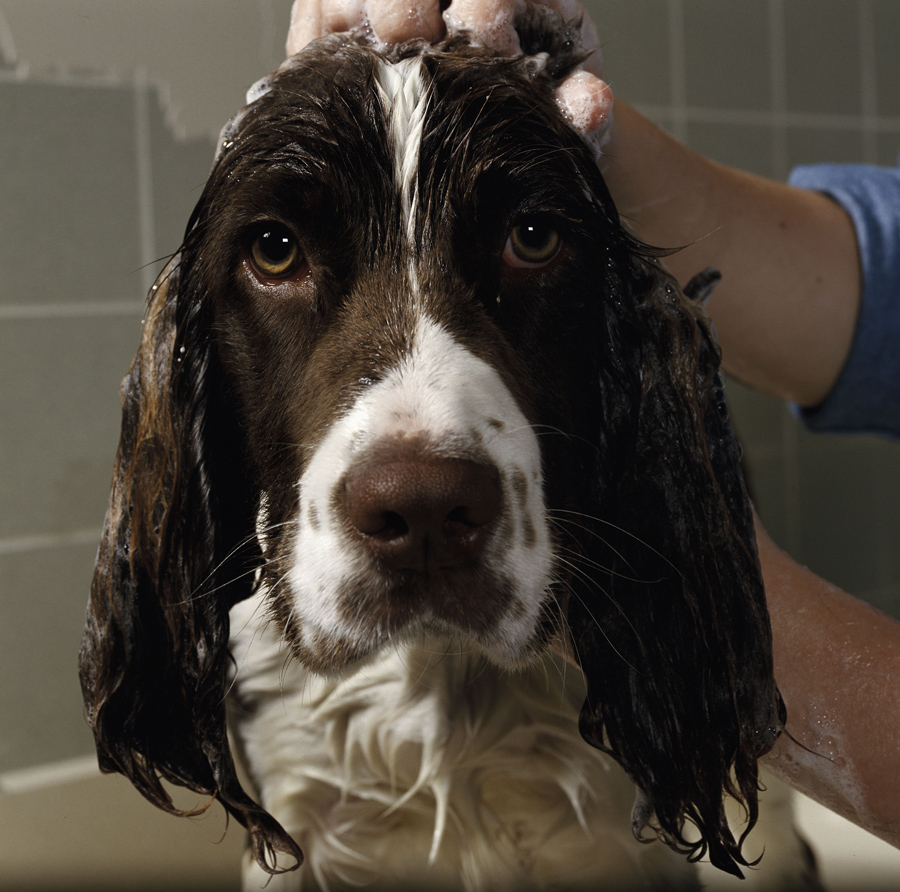
Remodel for pets.
All dogs have similar needs, whether they’re like King, the springer spaniel shown here, or any other breed or mix. Dogs enjoy a good meal, tolerate the occasional bath and require a place for their horde of chewed-up toys. Remodeling projects designed to accommodate pet needs will make life easier for both you and your dog.

Store food near the dog’s eating spot.
Make it easy on yourself and your pet: Store dog food in a pantry closet near your pooch’s eating spot. Here, food is kept in metal bins and treats are in a large jar.
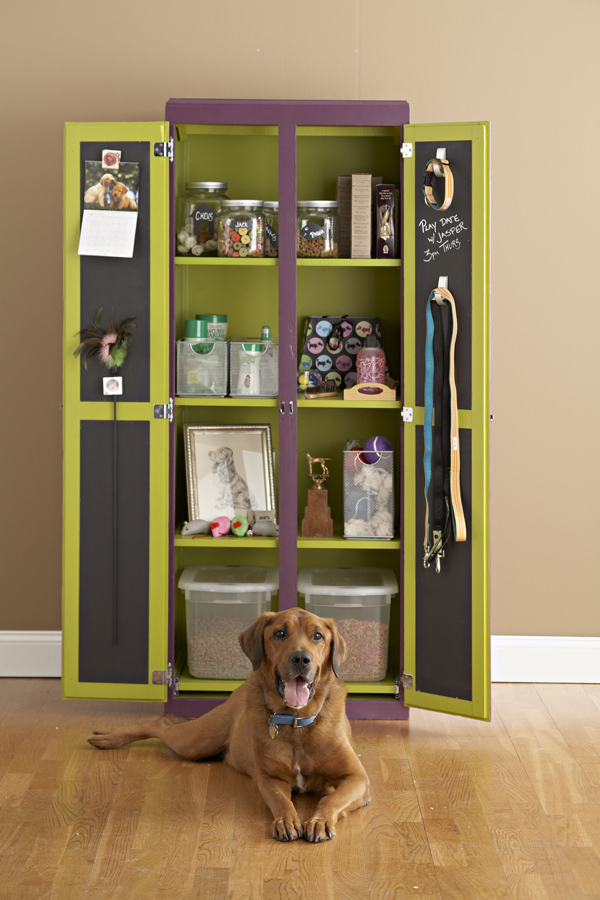
Give him his own closet.
Ready-to-assemble storage armoires are great for stashing your furry friend’s stuff. Food stays fresh and dry in tightly sealed bins on the lowest shelf. Going up from shelf to shelf, there are places for dog toys, trophies, shampoos and treats. Leashes are always ready on door hooks, and blackboard paint makes the doors good spots to leave dog-related messages, such as the date of the next vet appointment.
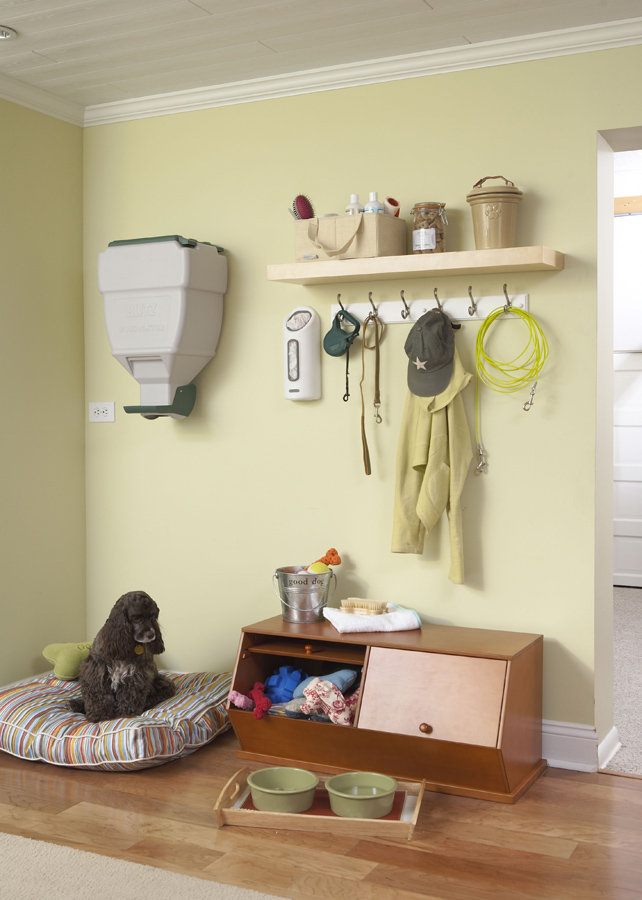
Contain her stuff to one spot.
When remodeling, it’s best if you can set aside a special area for your pet. A corner like this just off the kitchen is ideal. It allows space for eating, sleeping and storage. A spot here for leashes and small plastic bags for the pooch, and a hat and coat for you, keeps all ready for the command: “Take me for a walk.” If you are installing wood or laminate flooring, get material with a hard top-coat finish and very tight seams, which the occasional wet accident cannot penetrate. If you expect to have puppies or dogs that are not fully housebroken around your home, linoleum or vinyl flooring might be best.
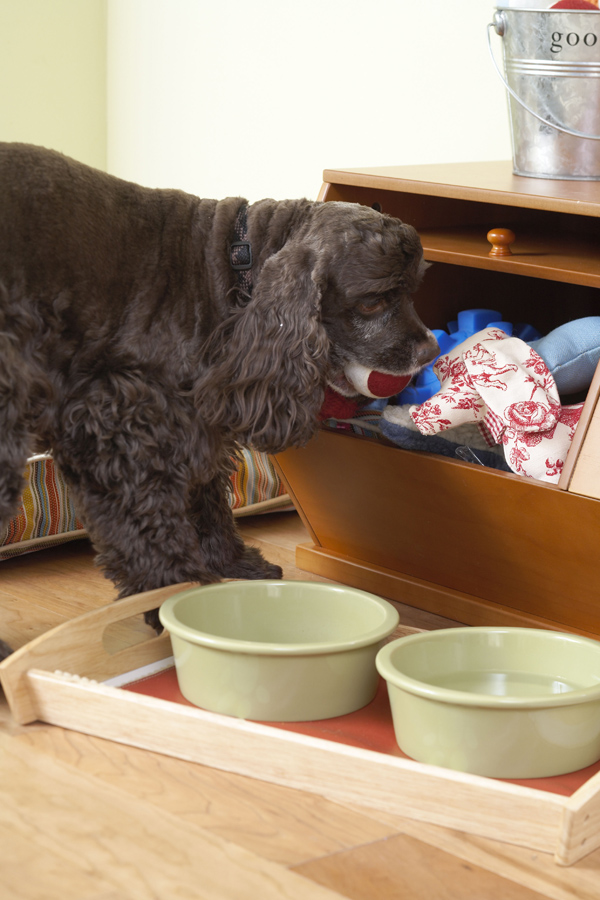
Store toys in a bin.
Nothing beats chewing on bones, stuffed animals, tennis balls or even Master’s shoes. This dog has a small bin for precious toys. The bin is kept in the same eating/sleeping area seen in the previous slide.
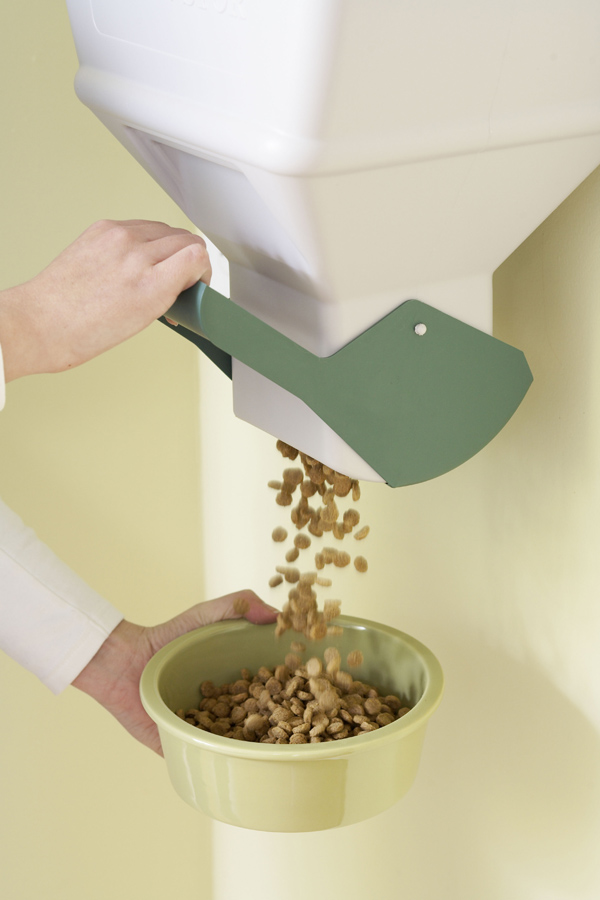
Try an easy-serve food bin.
Wall-mounted pet-food bins are convenient for storing dry kibble. Cat owners can use these bins to store litter products. If you have youngsters at home, be sure to mount this high enough to discourage curious little ones from reaching the handle.
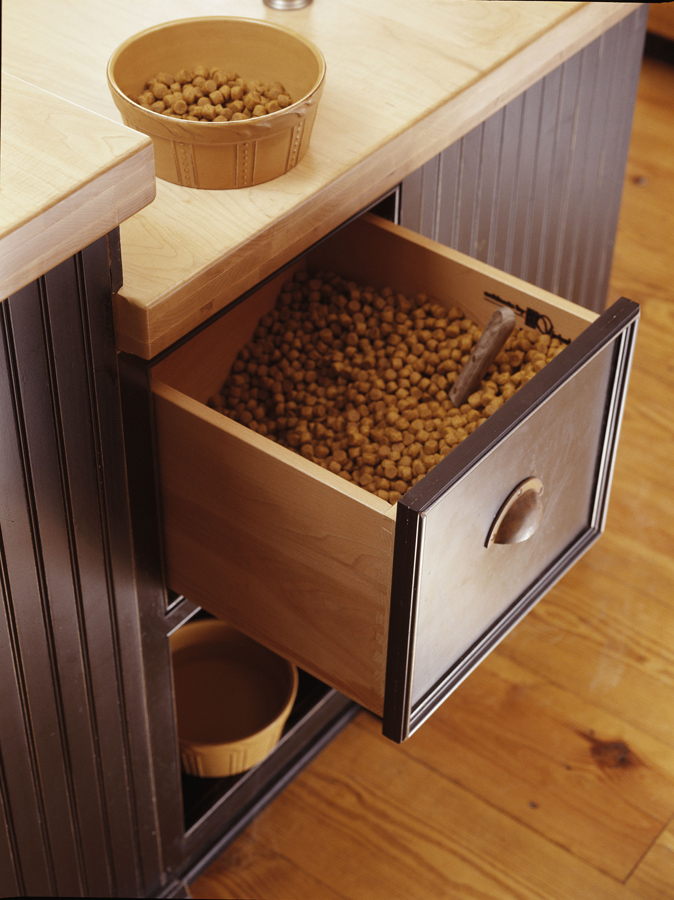
Dedicate a drawer to kibble.
Most of us are cramped enough for space without giving away some to Fido. To store his food efficiently, dedicate a deep drawer to the dog. In this two-drawer bank, the top drawer is used for food storage. The lower drawer was removed to allow for bowls in a tucked-away feeding spot. It’s a convenient small-dog solution.
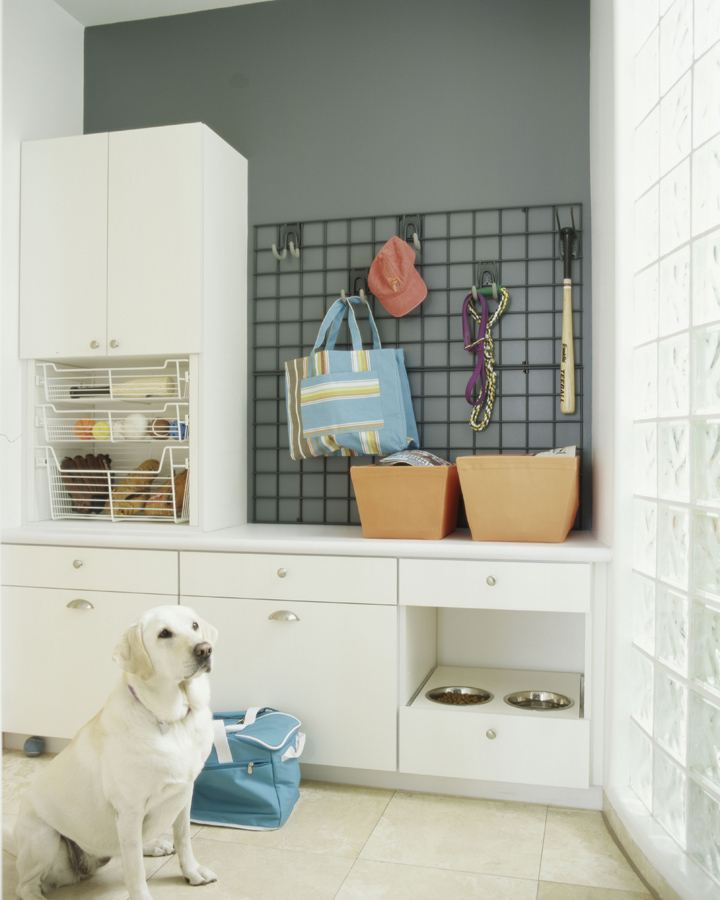
Set up an all-in-one feeding station.
Here’s a good setup to put near a back entry. Keep a feeding station with cabinetry near wall storage for leashes and such. The bowls for food and water pull out to give the four-footed diner easy access. Food cans and bags can be stored in the adjacent cabinet. There’s also a drawer to keep scissors, brushes, nail clippers and other small items necessary for dog maintenance.
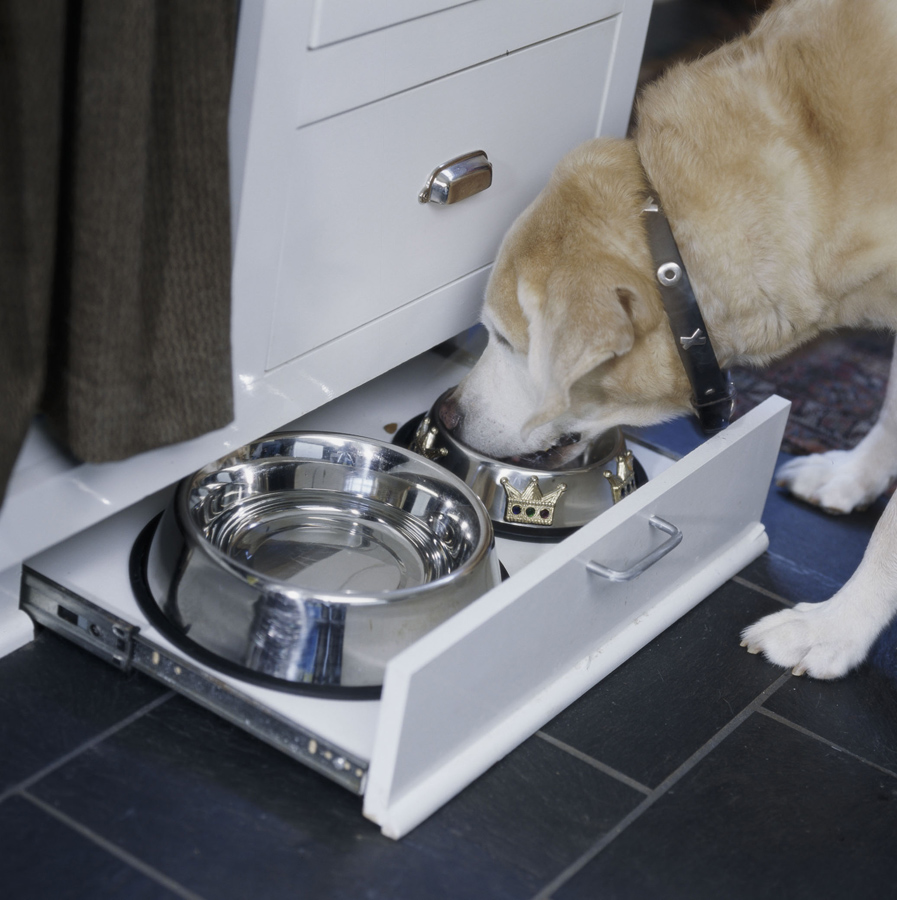
Try a roll-out solution.
Here’s a solution for a cramped kitchen. Put your dog’s water and food dishes on a shallow drawer that slides out like a tray. This one was mounted in a cabinet’s toe-kick. The key to making this arrangement work is to install the tray using high-quality, heavy-duty slides.
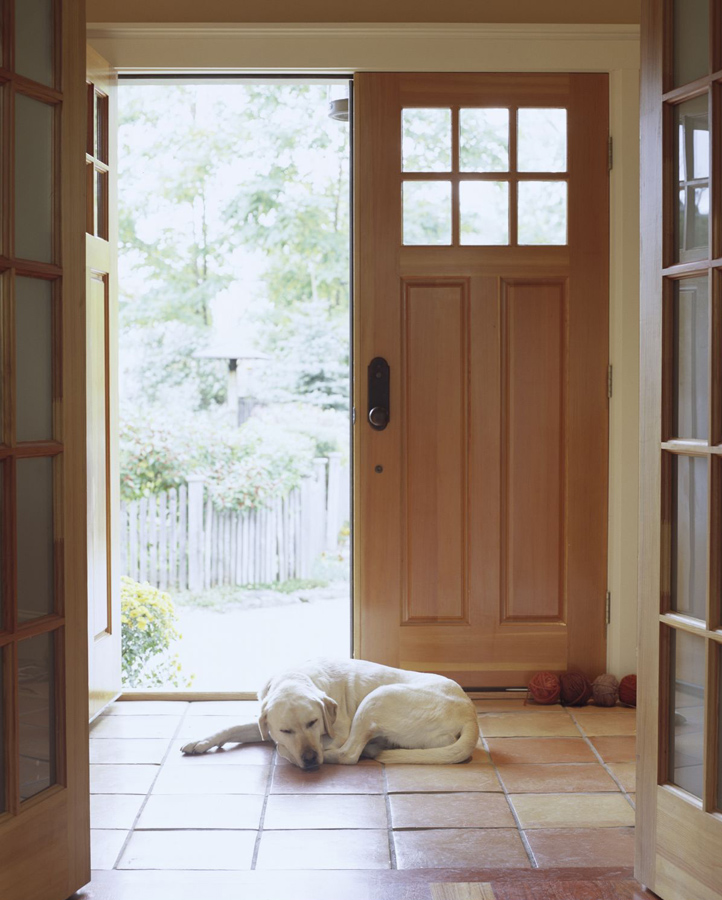
Choose flooring that’s suitable for your pet.
As with the sleeping Lab in this image, many dogs are fond of ceramic tile—particularly on a hot summer day when the tile is cool. But if your dog is not well housebroken, his or her accidents will probably soak into the grout and could even soak into porous tile if not cleaned up immediately. Vinyl and linoleum are good choices because they will stand up to most dog abuse. Wood and laminate are bit more vulnerable to urine damage, but harder finishes and extremely tight joints can hold up well to dogs. Carpet can be difficult to keep clean if those previously mentioned accidents occur frequently.
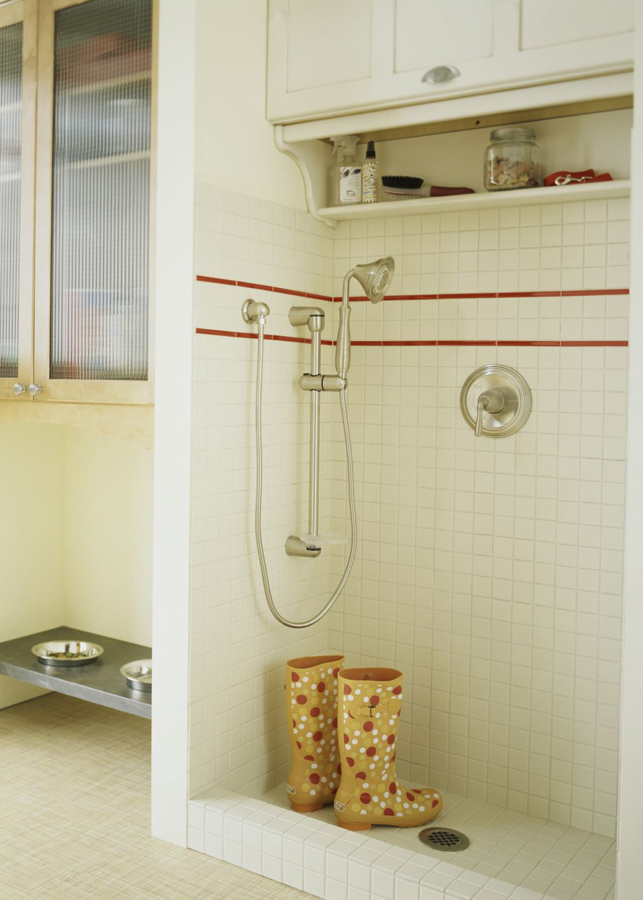
Install a shower in the mudroom.
Every now and then, dogs like to bring the outdoors in. It’s like they enjoy dirt-matted hair, muddy feet and odd odors. Installing a small shower in the mudroom will help you find the happy, clean dog that’s behind all that mess.
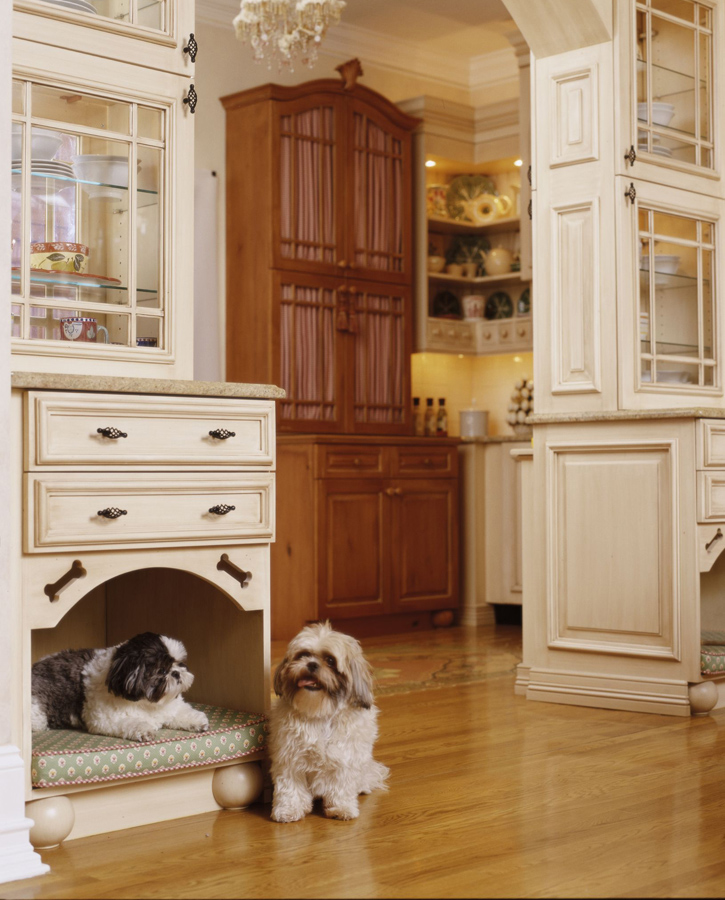
Create custom cabinetry.
These royal little fellows get custom bed cabinets in the kitchen. In addition to soft pillows for napping, the cabinets feature ball feet and bone cutouts—perfect touches for dogs.
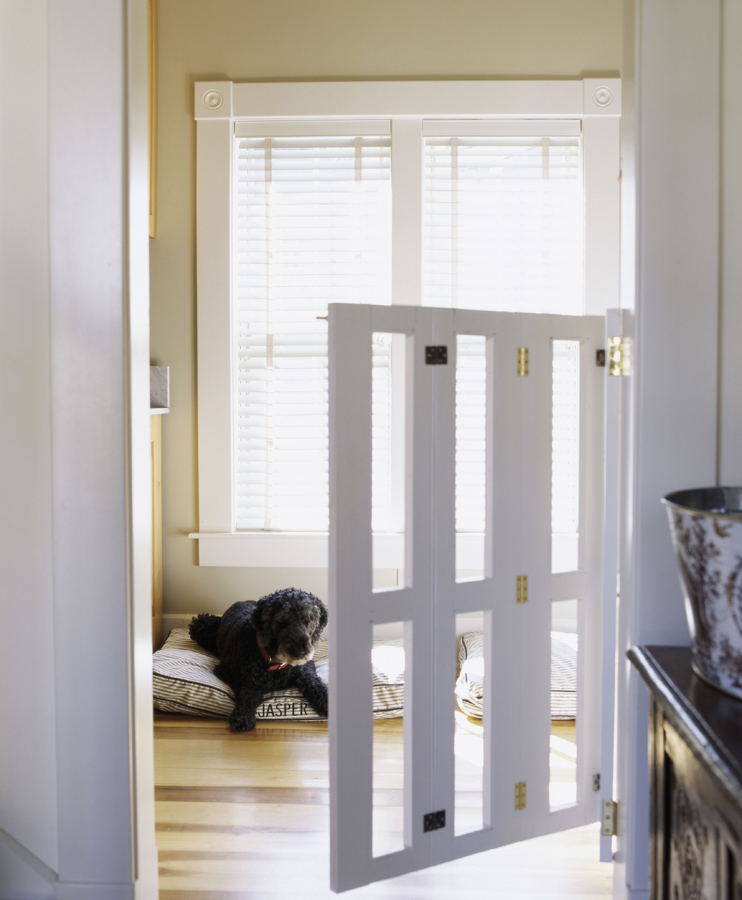
Add a gate.
There are places where little doggies should not go, but you might not want to close them away behind a full door. Put in an interior gate to keep the view open but the dog enclosed. Gates can keep light flowing from one room to the next, and they’re perfect in spots that won’t accept a full door, such as at the top of a stairwell. Make your gate look sophisticated like this one by using good materials, giving it a smooth finish and mounting it with gleaming hardware.
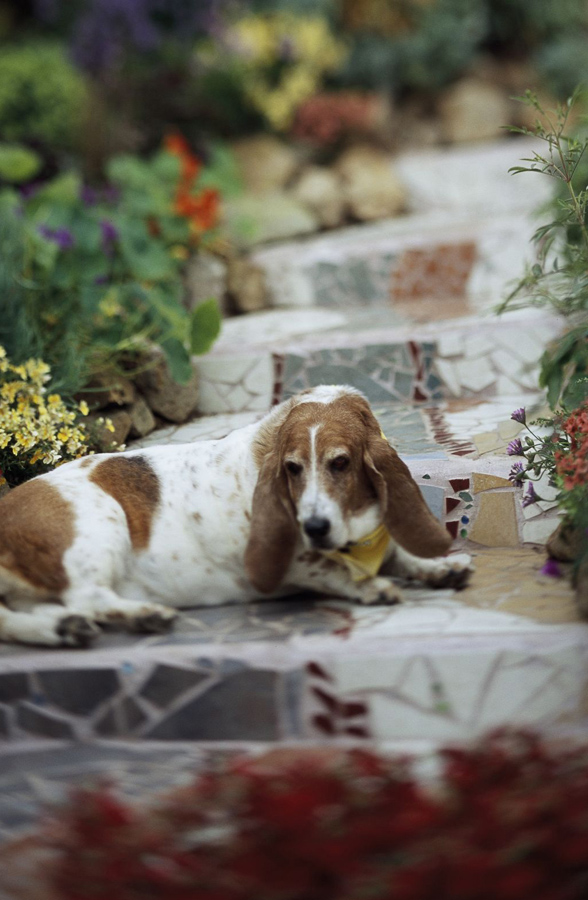
Plan outdoor stairs with your dog in mind.
When an outside project calls for stairs, consider the needs of your dog. Like many long, low breeds, this basset hound appreciates side stairs that allow him to ease up and down. His back could be injured by stairs that are steep and close together. Also, light the way. Pets’ eyes weaken as they age, just like ours.


